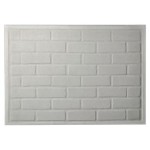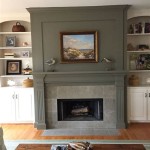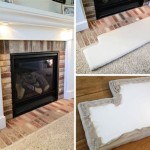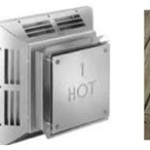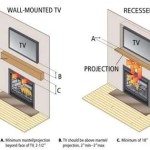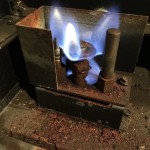Vented Gas Fireplace Inserts: A Comprehensive Guide
Vented gas fireplace inserts offer a convenient and aesthetically pleasing alternative to traditional wood-burning fireplaces. These inserts transform existing, often inefficient, masonry fireplaces into efficient and controllable heating sources. Understanding the components, benefits, installation, and maintenance of vented gas fireplace inserts is crucial for making an informed decision regarding home heating options.
A vented gas fireplace insert is a self-contained unit designed to fit into an existing fireplace opening. It operates using either natural gas or propane and requires a direct connection to a venting system that expels combustion byproducts outside the home. Unlike vent-free models, vented inserts prioritize indoor air quality by ensuring all fumes are safely removed.
Key Components of a Vented Gas Fireplace Insert
Vented gas fireplace inserts comprise several integral components working in unison to provide heat and ambiance. These components include the firebox, burner, gas valve, control system, venting system, and decorative elements.
The firebox is the insulated enclosure containing the burner and simulated logs or other decorative media. Its primary function is to contain the fire and reflect heat into the room. Fireboxes are typically constructed from durable materials such as steel or cast iron to withstand high temperatures.
The burner is the component responsible for mixing gas and air to create the flame. Burner designs vary depending on the model and manufacturer, influencing the flame pattern and heat output. Some burners feature intricate designs to simulate the look of a natural wood fire.
The gas valve regulates the flow of gas to the burner. It is controlled by a thermostat or a remote control, allowing users to adjust the flame height and heat output. Safety features, such as shut-off mechanisms in case of gas leaks or pilot light failure, are integrated into the gas valve system.
The control system manages the operation of the insert. This may range from a simple on/off switch to a sophisticated electronic control panel with programmable thermostats and remote control capabilities. Advanced systems offer features like zone heating and timer settings for increased energy efficiency.
The venting system is critical for removing combustion byproducts, such as carbon monoxide and water vapor, from the home. Vented gas fireplace inserts require either a chimney liner installed within the existing chimney or a direct vent system that exhausts directly through an exterior wall. The venting system must be correctly sized and installed to ensure safe and efficient operation.
Decorative elements, such as artificial logs, glass beads, or stones, enhance the aesthetic appeal of the insert. These elements are designed to mimic the appearance of a traditional wood-burning fire, providing visual warmth and ambiance. The material selection and arrangement of these elements contribute to the overall realism of the flame presentation.
Advantages of Vented Gas Fireplace Inserts
Opting for a vented gas fireplace insert offers numerous advantages compared to traditional wood-burning fireplaces and vent-free gas options. These advantages include improved efficiency, convenience, enhanced safety, and reduced environmental impact.
Vented gas fireplace inserts are significantly more efficient than traditional open-hearth fireplaces. A substantial amount of heat is lost up the chimney in a traditional fireplace, whereas inserts are designed to radiate heat into the room. They can achieve efficiency ratings between 60% and 85%, depending on the model and venting configuration contributing to lower energy bills and improved heating performance.
The convenience offered by gas fireplace inserts is a significant draw for many homeowners. Unlike wood-burning fireplaces, there is no need to chop, stack, or haul wood. The insert can be ignited with the push of a button or the click of a remote control. Additionally, there is no ash to clean up, reducing maintenance time and effort. Control systems allow for precise temperature regulation, ensuring consistent and comfortable heating.
Safety is a paramount concern with any heating appliance. Vented gas fireplace inserts are designed with multiple safety features to protect homeowners. The sealed firebox prevents sparks and embers from escaping into the room, reducing the risk of fire. The venting system ensures that all combustion byproducts are safely exhausted outside the home, eliminating the risk of carbon monoxide poisoning. These inserts are generally considered safer than vent-free models, which release combustion byproducts directly into the living space.
Vented gas fireplace inserts have a reduced environmental impact compared to wood-burning fireplaces. Burning wood releases particulate matter and other pollutants into the atmosphere, contributing to air pollution. Gas-burning inserts produce significantly fewer emissions, making them a cleaner and more sustainable heating option. The availability of natural gas and propane as fuel sources also provides flexibility in regions with limited wood resources.
Installation and Maintenance of Vented Gas Fireplace Inserts
Proper installation and regular maintenance are essential for ensuring the safe and efficient operation of a vented gas fireplace insert. Installation should always be performed by a qualified technician, and routine maintenance is necessary to prevent problems and prolong the lifespan of the appliance.
Installation begins with a thorough inspection of the existing fireplace and chimney. The technician will assess the condition of the chimney and determine the appropriate venting solution. This may involve installing a chimney liner or a direct vent system. The insert is then carefully positioned within the fireplace opening and connected to the gas supply and venting system. It is crucial to follow the manufacturer's instructions and local building codes during the installation process.
Regular maintenance is crucial for maintaining optimal performance and safety. Annual inspections should be performed by a qualified technician to check for any signs of damage or wear. The burner, gas valve, and venting system should be cleaned and inspected to ensure proper function. Carbon monoxide detectors should be installed and tested regularly to provide an early warning in case of a malfunction. It is also important to clean the glass front of the insert periodically to remove soot and maintain a clear view of the flames.
Common maintenance tasks that homeowners can perform include cleaning the decorative logs or media, vacuuming the firebox, and checking the batteries in the remote control. It is important to follow the manufacturer's recommendations for cleaning products and procedures to avoid damaging the insert. Any unusual noises or smells should be reported to a qualified technician immediately.
Selecting the appropriate vented gas fireplace insert requires careful consideration of several factors, including the size of the room, the desired heat output, the venting requirements, and the aesthetic preferences of the homeowner. Consulting with a qualified fireplace dealer or contractor is recommended to determine the best option for individual needs and circumstances.
Gas fireplace inserts are available in a wide range of sizes, styles, and heat outputs. Smaller inserts are suitable for heating smaller rooms, while larger inserts are capable of heating larger areas. The BTU rating of the insert indicates its heat output, and it is important to choose an insert with a BTU rating that is appropriate for the size of the room. Different styles are offered, from traditional log sets to contemporary glass media, allowing homeowners to customize the look of their fireplace. The venting requirements of the insert will depend on the type of venting system that is available in the home.
Vented gas fireplace inserts offer a practical and attractive solution for upgrading existing fireplaces and adding supplemental heat to homes. By understanding the components, benefits, installation, and maintenance requirements, homeowners can make an informed decision and enjoy the warmth and ambiance of a gas fireplace for years to come.

Oakville Gdix4 Direct Vent Gas Fireplace Inset By Napoleon

Rushmore 30 Direct Vent Fireplace Insert Fine S Gas

Fireplaceinsert Com Kingsman Fireplace Insert Idv36

Direct Vent Gas Fireplace Supreme Hearth

Superior Gas Fireplace Insert Dri3030c Contemporary

Majestic Ruby 35 Direct Vent Gas Insert Ruby35 North Country Fire

Napoleon Ascent Dx42 Direct Vent Gas Burning Fireplace

Monessen Direct Vent Gas Fireplace Insert Reveal

White Mountain Hearth By Empire Comfort Systems Direct Vent Gas Fireplace Insert Loft

Majestic Jasper Gas Direct Vent Fireplace Insert Jasper30 Hvacdirect Com
Related Posts

